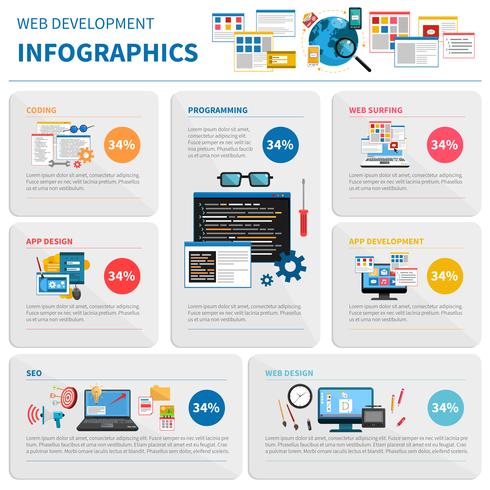Intrigued In Finding Out Exactly How Website Style Has Transformed Over The Years? Explore The Development From Fundamental, Straightforward Designs To User-Centered Techniques That Focus On The Requirements And Preferences Of Online Visitors
Intrigued In Finding Out Exactly How Website Style Has Transformed Over The Years? Explore The Development From Fundamental, Straightforward Designs To User-Centered Techniques That Focus On The Requirements And Preferences Of Online Visitors
Blog Article
Created By-Johansen Bowles
In the past, websites were straightforward and concentrated on info. Navigation was direct, and design was for desktops. Now, individual experience is vital. Data overviews layouts for easy navigation. Receptive layouts fit various gadgets. Today, dark mode reduces pressure, and minimalist menus enhance navigation. Interactive features involve users, and vibrant visuals attract attention. AI integration enhances involvement. See how style has actually developed to enhance your on the internet trip.
Early Days of Website Design
In the very early days of website design, simpleness preponderated. Web sites were standard, with minimal shades, font styles, and designs. The focus got on supplying details as opposed to fancy visuals. Individuals accessed the net with slow-moving dial-up links, so rate and performance were essential.
Navigating menus were straightforward, usually located on top or side of the page. Internet sites were designed for desktop, as mobile surfing wasn't yet widespread. Web content was king, and designers focused on very easy readability over complicated layout components.
HTML was the primary coding language utilized, and developers needed to work within its restraints. Computer animations and interactive features were minimal compared to today's criteria. search optimisation were fixed, with little dynamic material or personalized customer experiences.
Rise of User-Focused Layout
With the advancement of internet site style, a shift towards user-focused layout principles has actually come to be increasingly famous. Today, producing web sites that focus on user experience is important for engaging visitors and accomplishing business goals. User-focused style entails comprehending the demands, choices, and actions of your target market to customize the site's design, web content, and includes appropriately.
Designers now perform detailed research, such as user studies and functionality screening, to gather understandings and feedback straight from customers. This data-driven approach aids in developing intuitive navigation, clear calls-to-action, and visually appealing interfaces that resonate with site visitors. By placing the user at the center of the layout procedure, websites can supply a much more tailored and pleasurable experience.
Responsive style has actually additionally emerged as a vital aspect of user-focused design, guaranteeing that websites are optimized for numerous gadgets and screen dimensions. This versatility enhances ease of access and functionality, dealing with the diverse means customers engage with web sites today. Fundamentally, the increase of user-focused style symbolizes a change in the direction of developing digital experiences that focus on the needs and assumptions of the end individual.
Modern Trends in Web Design
Explore the latest fads forming web design today. One prominent fad is dark setting layout, supplying a streamlined and contemporary look while reducing eye pressure in low-light environments. Another essential pattern is minimal navigation, streamlining menus and enhancing customer experience by focusing on essential elements. Integrating micro-interactions, such as animated buttons or scrolling impacts, can develop an extra appealing and interactive internet site. Receptive style continues to be essential, ensuring seamless individual experiences throughout numerous devices. Furthermore, using https://website-marketing-tools40506.howeweb.com/30439895/very-carefully-select-an-electronic-marketing-company-for-your-company-by-considering-your-purposes-financial-resources-and-relevant-industry-understanding-in-order-to-achieve-success and asymmetrical layouts can include aesthetic passion and accentuate details material.
Incorporating AI innovation, like chatbots for customer assistance or customized referrals, improves individual engagement and streamlines procedures. Ease of access has likewise end up being a considerable fad, with developers focusing on inclusive layout practices to satisfy diverse customer demands. Embracing sustainability by maximizing internet site performance for rate and effectiveness is one more emerging fad in website design. Working together with user responses and information analytics to iterate and boost style continually is crucial for remaining pertinent in the ever-evolving digital landscape. By welcoming these contemporary fads, you can develop a visually appealing, easy to use site that reverberates with your target market.
Verdict
As you reflect on the evolution of website style from the very early days to now, you can see just how user-focused layout has come to be the driving force behind modern patterns.
Embrace https://www.bandt.com.au/indago-digital-gives-macquarie-alumnus-tips-on-digital-marketing-bolstering-roi/ of change and adaptation in website design, constantly maintaining the individual experience at the leading edge.
Remain current with the most up to date patterns and technologies, and never ever stop advancing your method to produce aesthetically stunning and user-friendly websites.
Develop, adapt, and create - the future of web design remains in your hands.
